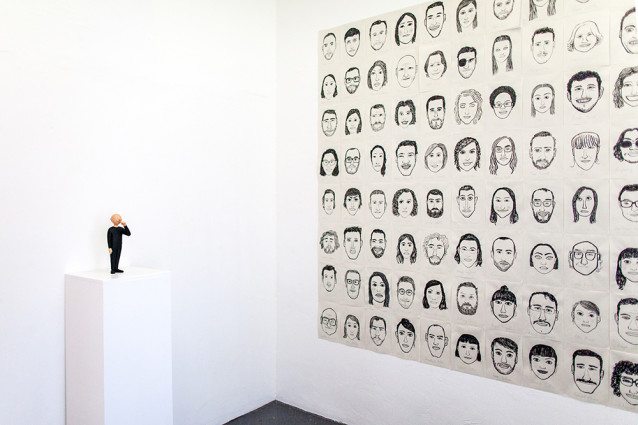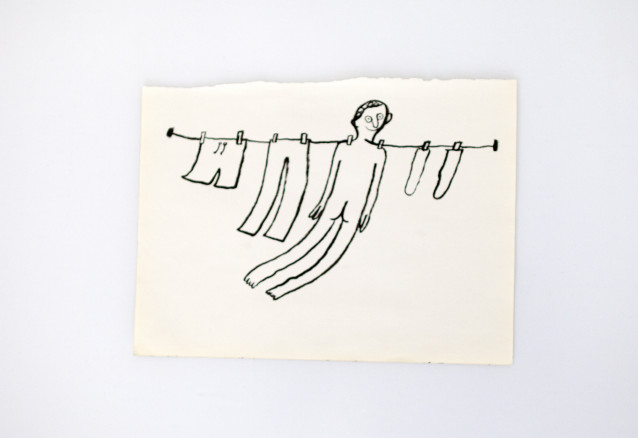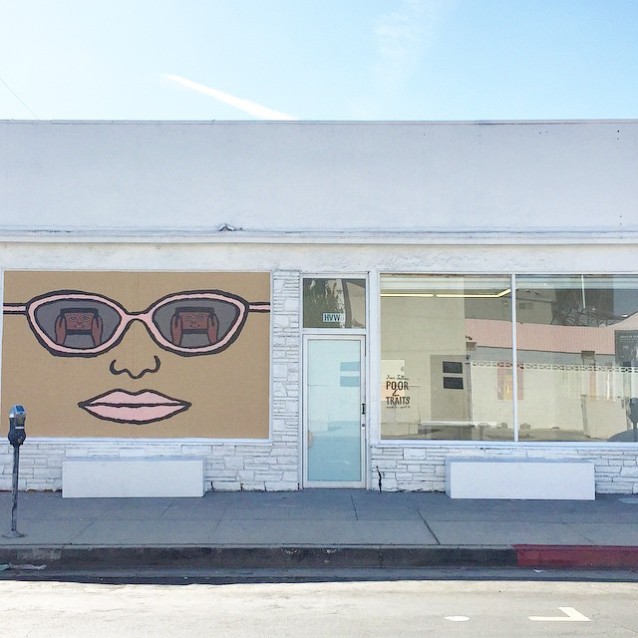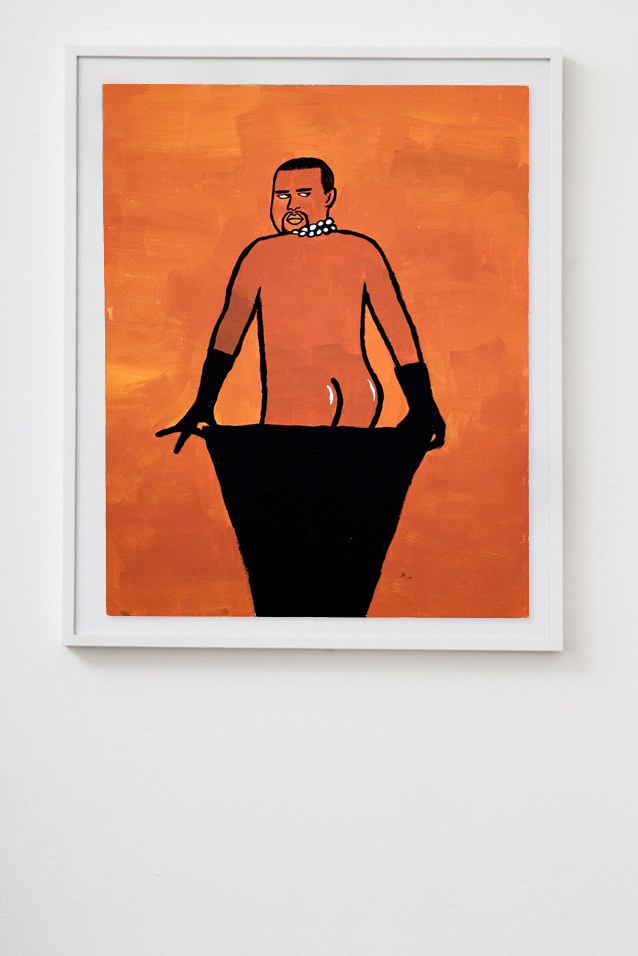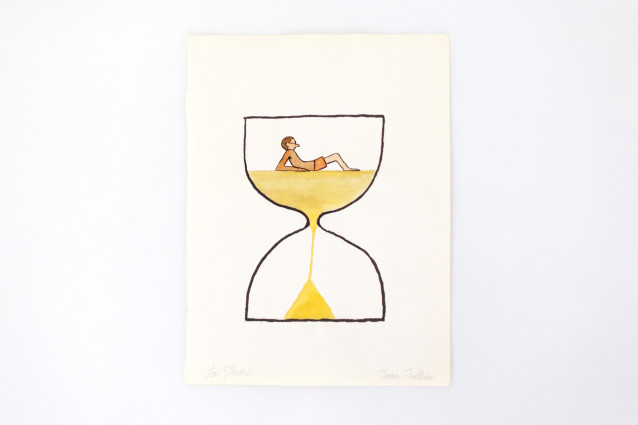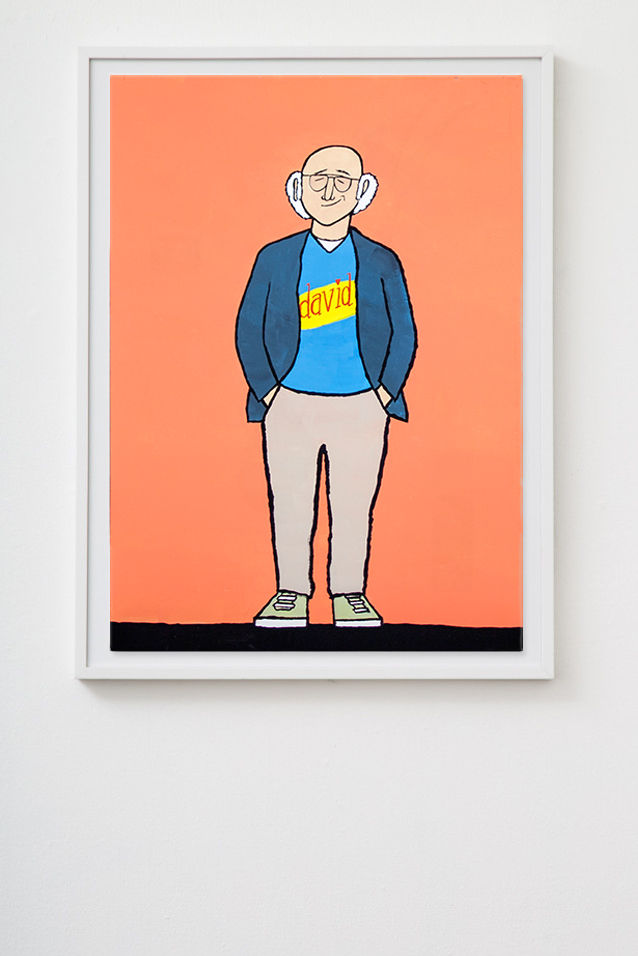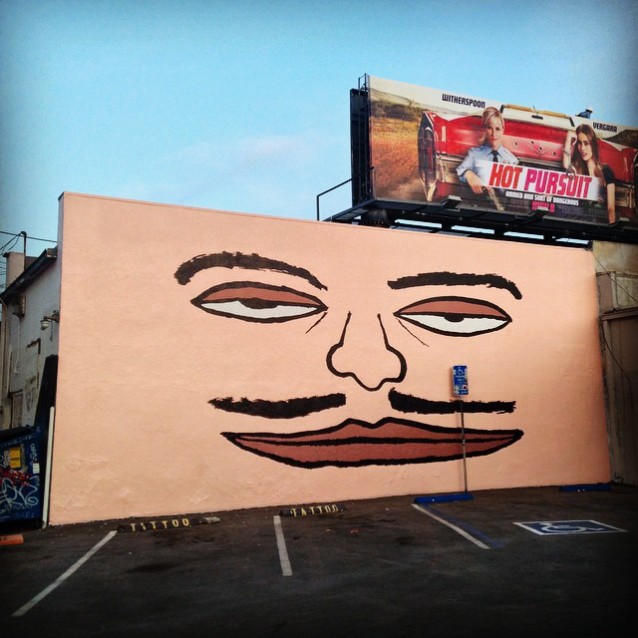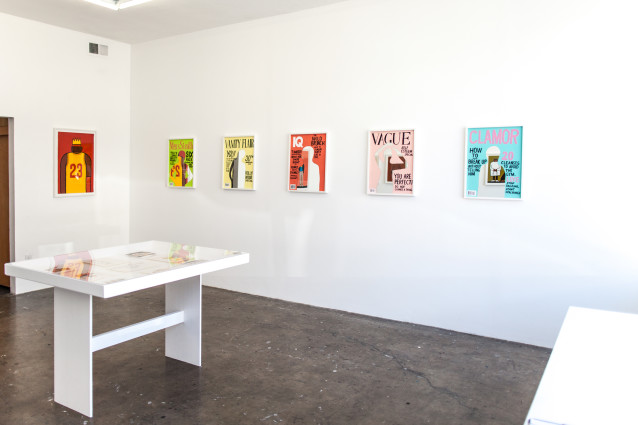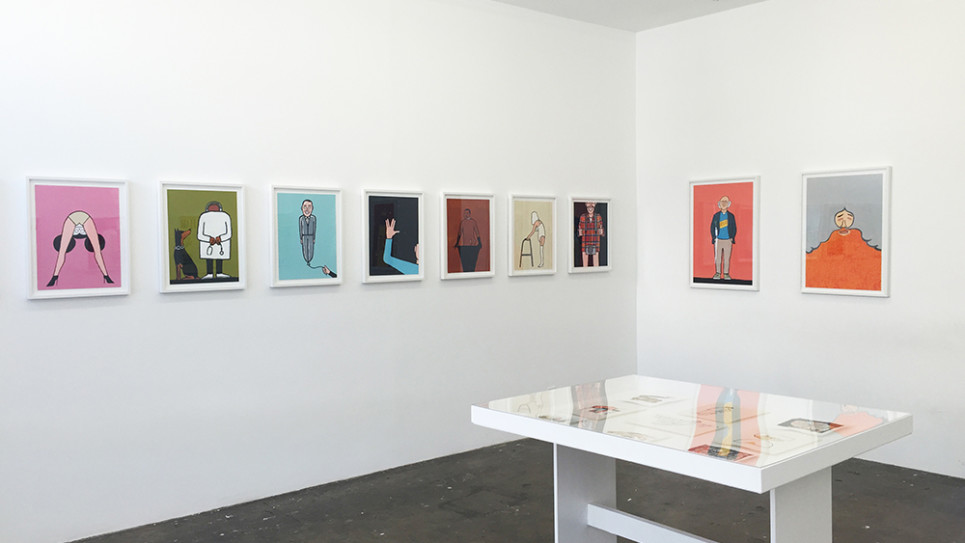
POOR TRAITS – Los Angeles
A crowd of self-satisfied urbanites holds fruits to their ears with unbroken focus, tapping away obliviously, some taking selfies with their literal “apples.” A dress that is blue & black and white & gold. A couple having sex to a recording of their own sex tape. A re-creation of Ellen DeGeneres’ tweet-frenzied Oscar selfie composed of an epic crowd of Roger Ebert, an ice bucket headed challenger, Kim Jong Un holding movie theater popcorn, a crying blue Genie, a black man’s arms upheld with a T-shirt donning the phrase “don’t shoot” all hashtagged “2014”. These recent images typify Jean Jullien’s rapid and incessant presentness. He has one scrupulous eye on events that exist in a collective public consciousness and another voyeuristic eye on private moments of obsession, self-absorption, technological dependence, social and personal alienation, and other conditions that feel like an utter contemporary syndrome. His images are done with thick painterly lines, schematical figurations, and digital color fills–all the elements that have come to be recognized as an illustrative graphic style. As if the buoyant language of 60s graphic design were used to satirize the silly things we do when no one is looking.
Historically, illustration (political caricatures, comic strips, and other periodicals) have served as effective vehicles for social and political commentary precisely because of its medium specificity. That is, it’s playful and innocuous enough to avoid insult, but it’s accessible and pervasive enough to incite real rage, expose real controversy, inspire real action. Graphic design/illustration is unique in its ability to summarize, tantalize, and propagandize with economy. But despite its friendly appearance, illustrators face real life-threatening risks and danger in their practice and expression. Jullien has made his own homage to Charlie Hebdo, pencil defiantly plunged in the barrel of an AK in an iconic gesture of solidarity, which was one of the most widely circulated illustrated images honoring the tragedy.
The concept of recognizing the public in an individualized way sounds like an impossibility in that both terms seem to negate each other. Whereas graphic illustration is so often used to comment on an event, condition, phenomenon, or public entity, it’s less often used to convey something as intimate, personal, and anecdotal as a formal portrait. Jean Jullien reverses his usual gaze, and instead focuses on his particular public, the consumers of his labor and art. It is an exercise in not only sensing the history and character of his sitter, but the dilemma of rendering this with a restrained visual vocabulary in his characteristic tenor of sympathy and frankness. Jullien approaches portraiture in a self-reflexive way, that is, exposing the actual process of his own portrait-making with a self-consciousness of his own handwriting to answer the question of what constitutes a personality, whether physiological or psychological.
In Poor Traits Jean Jullien has asked friends, artists, collaborators, and various facets of his network to submit their image to be redrawn by him with his authorial style. This is a personal assessment of his subjects’ pasts from their immediate mannerisms, filtered, and transcribed in Jullien’s distinctive hand. The final image is a subjective impression and an earnest attempt to capture something essential about a person’s character where its difficulty and subtlety is apparent in the straight, matte, or fibrous line that compose a hairstyle, affect, or demeanor. He’s interested in how quirks, reputations, and subconscious ticks come to individuate and reenact a similar struggle for notoriety, fame, success, and selfhood.
Jean Jullien is a French graphic designer educated in London’s Central Saint Martin’s and Royal College of Art. He animates 80s action and Dungeons & Dragons inspired fantasy videos for his brother Nico’s electronic project Niwouinwouin. He has illustrated for The New Yorker, New York Magazine, Tate, Nike, Pitchfork, The New York Times, among others. He designed a bar in the shape of a gargantuan belly-down heron surrounded by cracked egg furniture which spans the length of the 32nd floor Nante’s panoramic Tour Bretagne as part of a city initiative to revitalize neglected urban spaces into cultural hubs. He currently lives and works in New York. Poor Traits is his first solo exhibition in the US at HVW8 Gallery.

